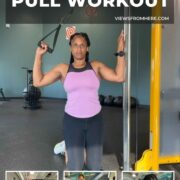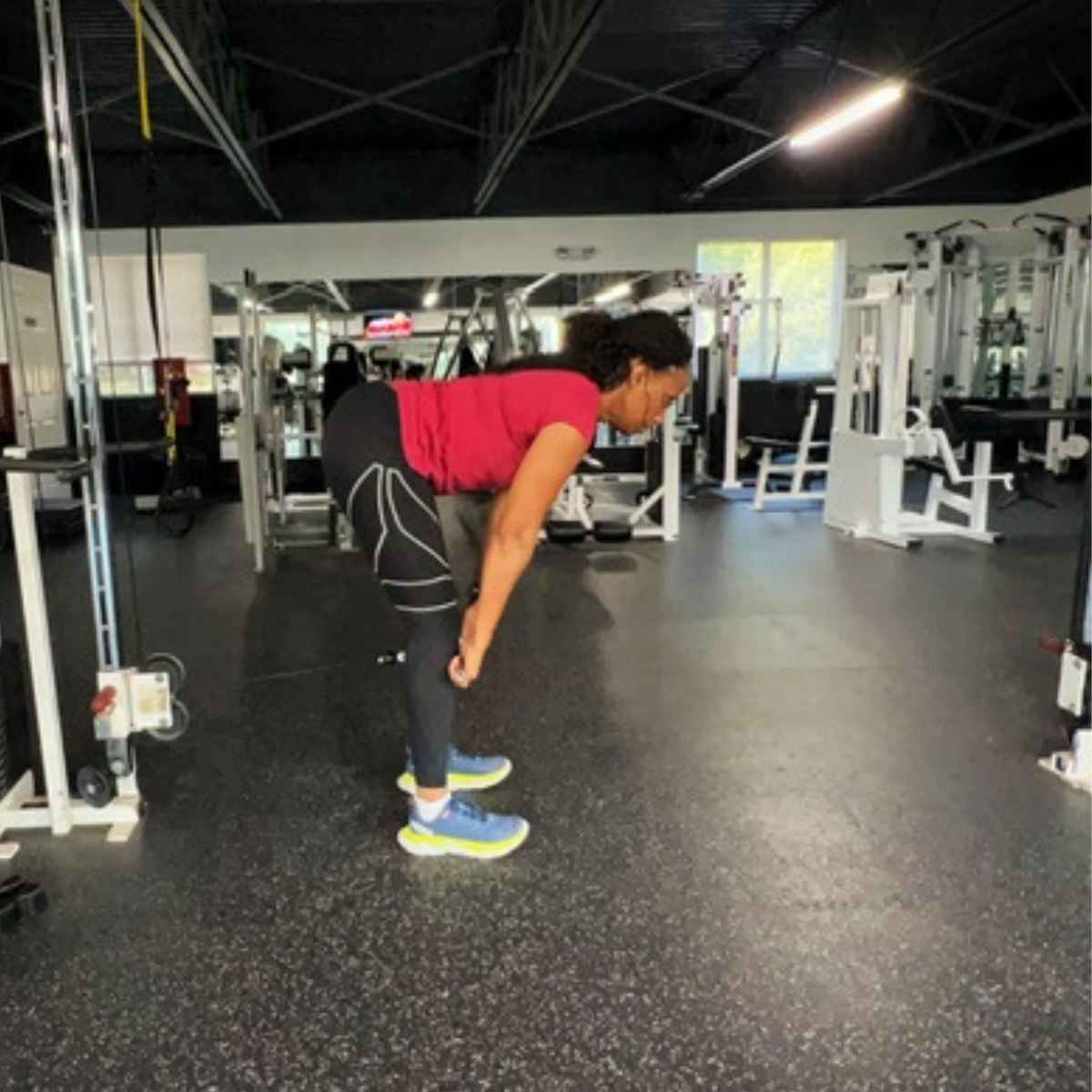Sculpt your upper body: Back and bicep pull workout
A strong and well-toned upper body enhances your physical appearance and plays an important role in maintaining overall strength and functional fitness. When it comes to sculpting your upper body, targeting the back and bicep muscles is key.
The back muscles, including the lats, rhomboids and traps, are responsible for pulling movements and also play a role in maintaining proper posture. Strengthening these muscles can alleviate common issues like rounded shoulders and upper back pain.
On the other hand, the bicep muscles, located in the front of the upper arm, contribute to arm flexion and grip strength, which are essential for everyday activities.

By incorporating a back and bicep pull workout into your strength training, you can experience a multitude of benefits. You will develop a well-defined back and toned biceps and improve your posture, increase upper body strength, and enhance your overall athletic performance.
Understanding your back and bicep muscles
The back muscles are a complex group that includes the lats (latissimus dorsi), rhomboids and traps (trapezius).
- Latissimus dorsi, commonly known as the lats, are the largest muscles in the back. They span from the upper arm to the lower back, providing width and thickness to the upper body.
- Rhomboids, located between the shoulder blades, help retract and stabilize the scapulae.
- Traps, located at the upper back and neck region, are responsible for shoulder elevation, retraction, and depression.
The back muscles have several functions that contribute to overall strength and posture. They play a vital role in pulling movements, such as rowing and pulling exercises, which involve the muscles working together to retract and adduct the scapulae. Strong back muscles help maintain good posture, stabilize the spine and prevent the common issues of rounded shoulders and upper back pain.
The bicep muscles are found in the upper arm and consist of the long head and short head of the biceps brachii.
- Biceps brachii is responsible for arm flexion, which involves bending the elbow joint.
Additionally, the biceps play a significant role in grip strength, aiding in activities that require a firm hold or grasp.
Benefits of a back and bicep pull workout
Incorporating a back and bicep pull workout into your routine offers advantages that go beyond just a visually appealing upper body.
- Improved posture: Back and bicep pull exercises strengthen the muscles responsible for maintaining good posture. Strong back muscles, such as the lats and rhomboids, help retract the shoulders, counteracting the forward shoulder posture caused by prolonged sitting or desk work. By correcting imbalances and promoting proper alignment, these exercises contribute to a more upright and confident posture.
- Enhanced upper body strength: Back and bicep pull workouts engage major muscle groups in the upper body, leading to increased strength and functional fitness. As you perform pulling exercises you challenge your back and bicep muscles, promoting muscular development and overall upper-body strength. This, in turn, improves your ability to perform daily activities that involve pushing, pulling and lifting.
- Increased functional fitness: The strength gained from a back and bicep pull workout carries over into various activities in daily life and sports. You will find that you can lift heavier objects, carry groceries with ease, and participate in sports like swimming because of the power you have developed through strength training.
- Aesthetic benefits: A well-developed back and defined biceps contribute to an aesthetically pleasing physique. Targeting these muscle groups through specific exercises helps sculpt your upper body, creating a V-tapered appearance.
- Injury prevention and posterior chain balance: Strengthening your back muscles helps create a strong and stable foundation for your entire posterior chain. This balanced development reduces the risk of imbalances and muscle compensations that can lead to injuries, particularly in the shoulders, neck and upper back.
Back and biceps exercises
Barbell row

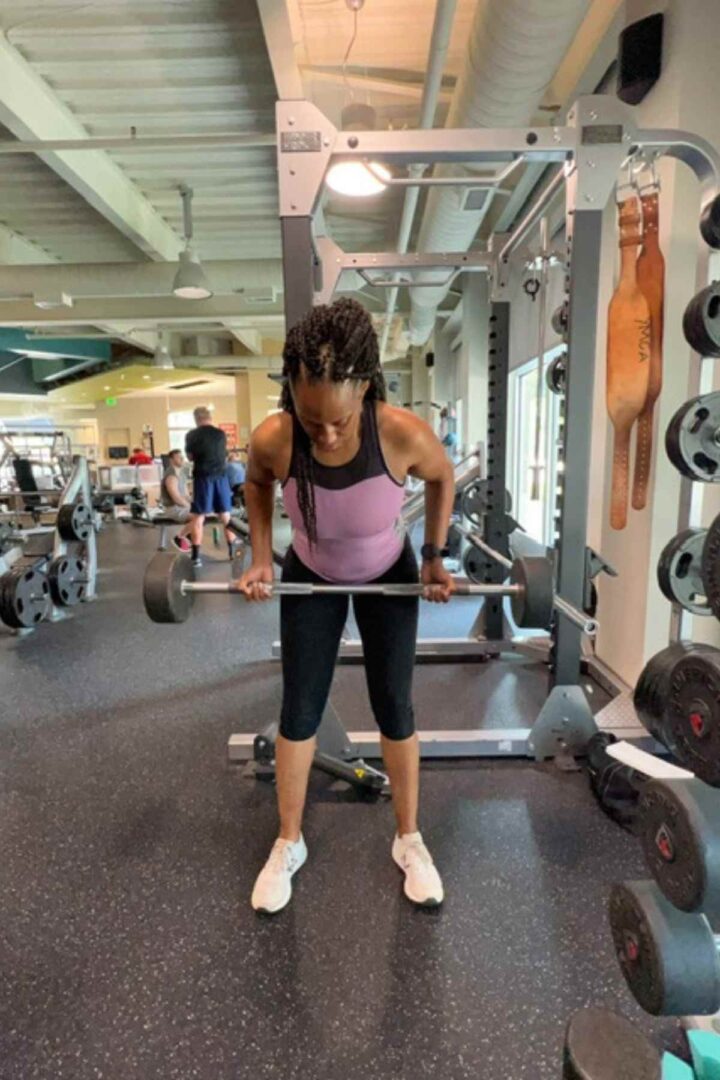
- Stand with your feet shoulder-width apart and grab the barbell (overhand or underhand grip) around the same distance.
- With the barbell in your hands, bend slightly over while keeping your back straight.
- Lift your chest and lower the bar by fully extending your arms to get a good stretch.
- Pull the bar back, all the way toward your belly button.
Lat pull-downs or single-arm lat pull-downs
The single-arm lat pull-down is a great isolation exercise allowing you to concentrate on one side at a time.
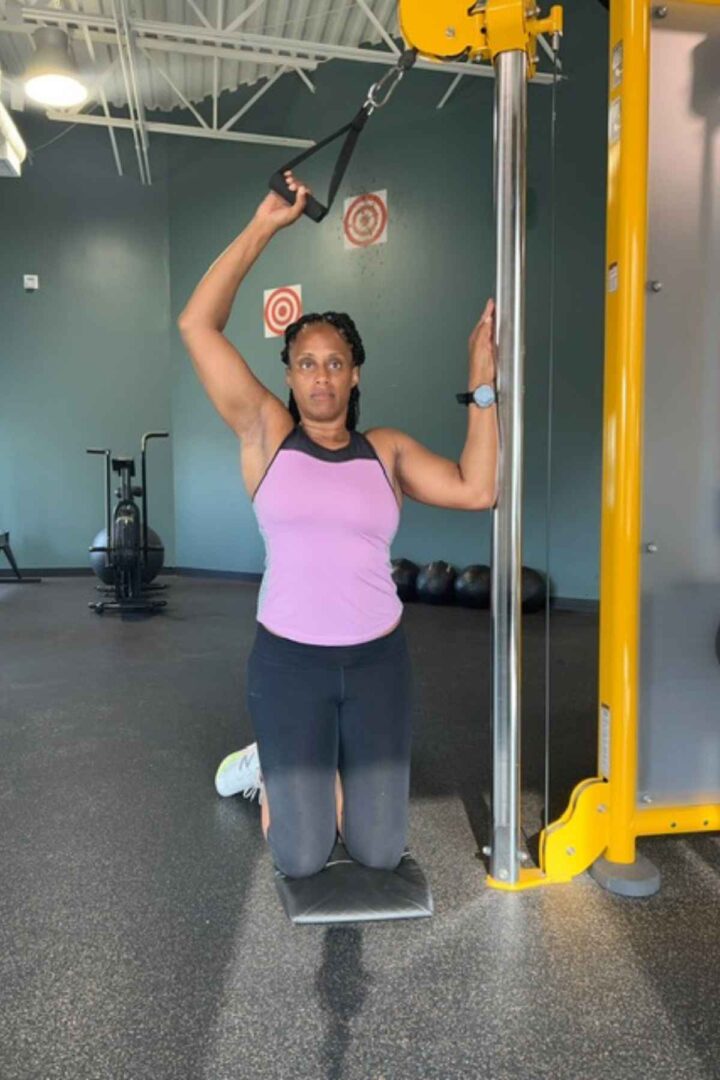
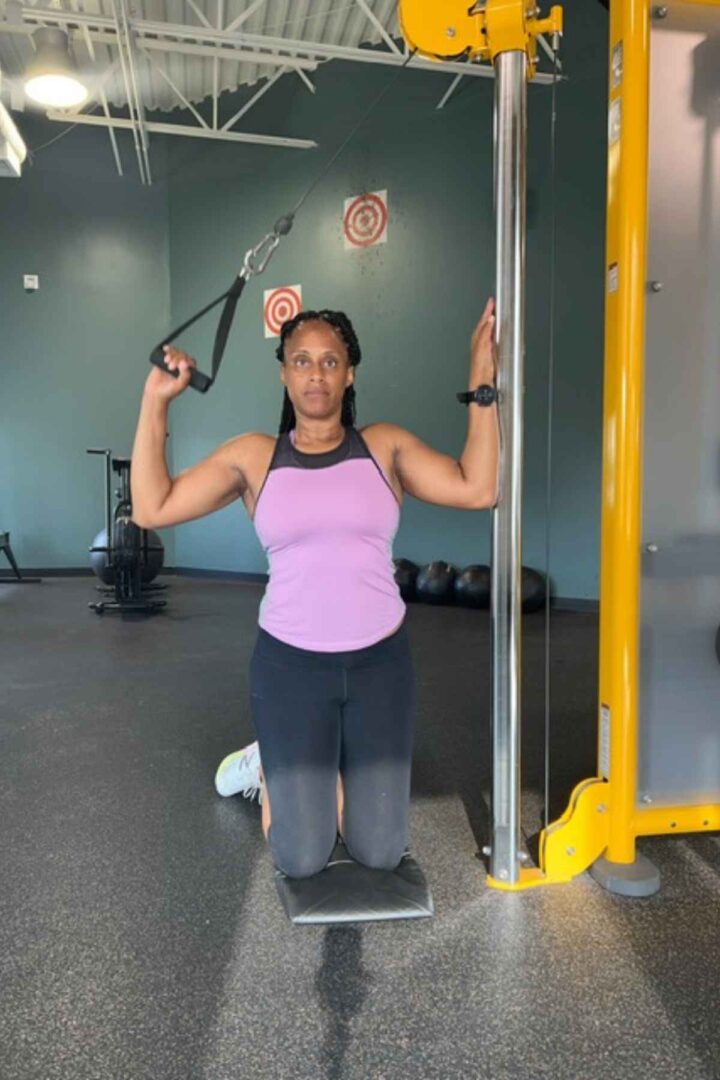
- Kneel next to the cable machine and grab the attachment with an overhand grip, slightly wider than shoulder-width.
- Pulling the attachment all the way down toward your side.
- Squeeze your lats and back muscles at the bottom of the movement.
- Once you’re at the bottom of the movement, slowly extend your arm so that you are in the starting position again.
Seated Cable Row

- Lean forward, grab a close-grip handle or a V-bar attachment with both hands, move back a bit, and place your feet on the machine’s platform.
- Bring your shoulders back, make sure your torso is upright, and maintain a slight bend in your knees.
- Take a breath and pull through your elbows until the attachment taps your upper stomach lightly.
- Use a full range of motion and feel the stretch in your back as you release the weight. Keep your torso in a stationary position.
Preacher curls


- Grab a barbell and sit on the preacher curl machine.
- Place your elbow flush on a preacher curl, or incline bench at 55 degrees.
- Slowly lower your arm under control.
- Squeeze your biceps as you curl the bar back up.
Dumbbell Pullover
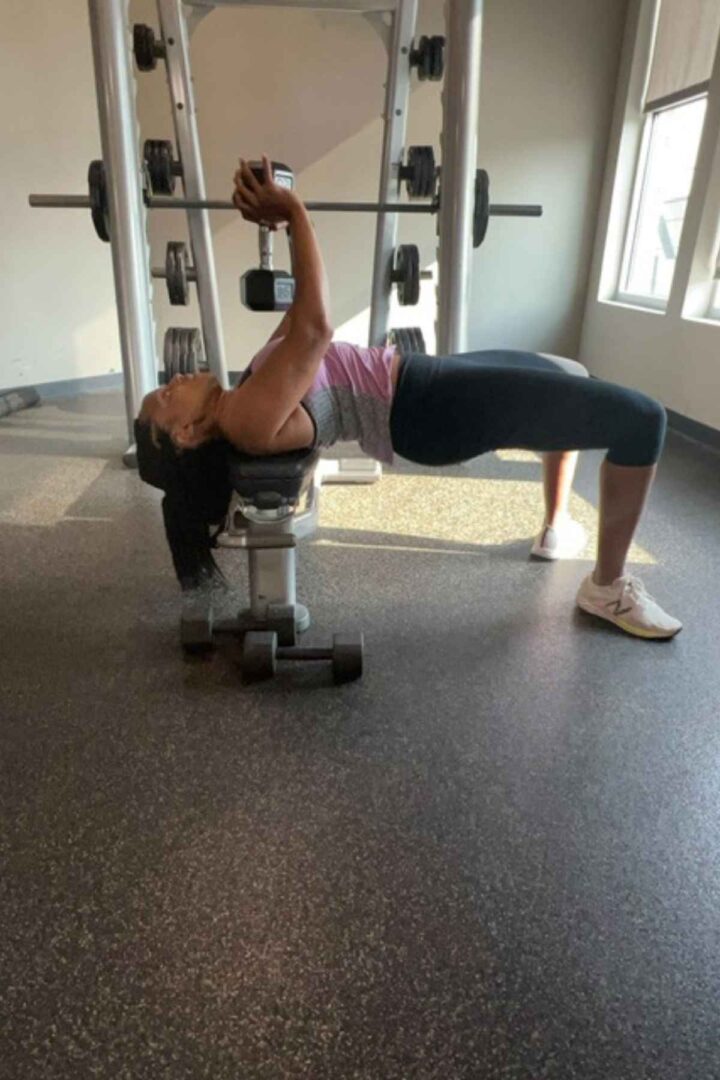
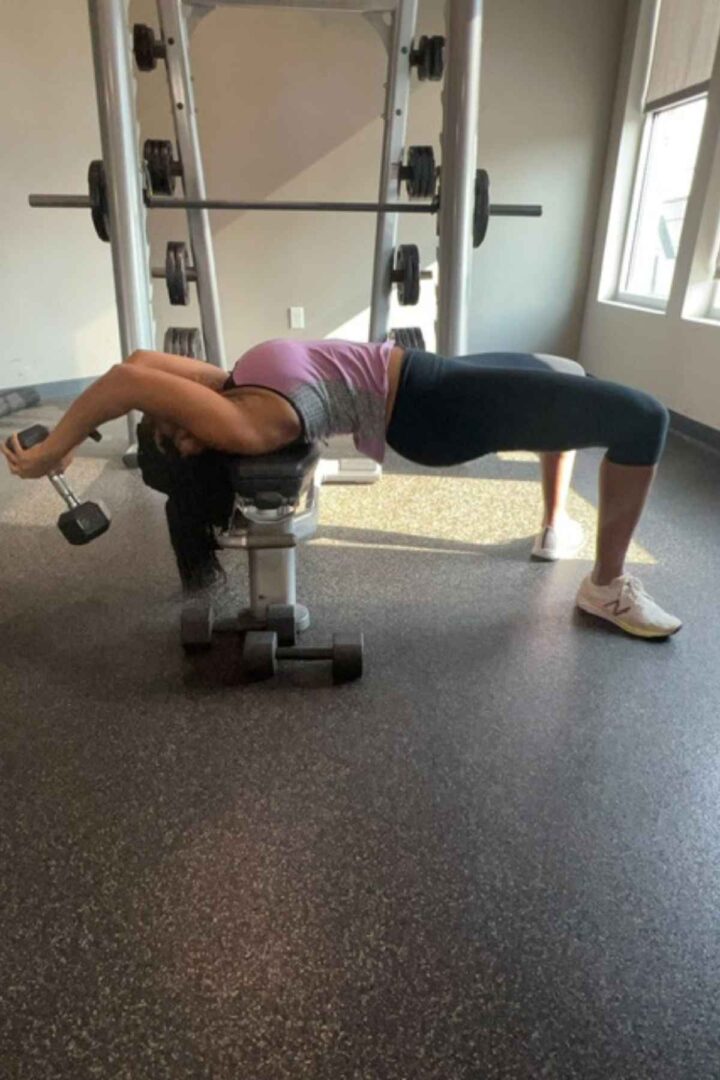
- Place your shoulder blades on the bench while tightening your core and glutes to keep your body straight.
- Extend your arms toward the ceiling, over your chest. Your palms should be facing each other and your elbows slightly bent.
- Extend the weight back and over your head, keeping a strong back and core.
- Take about 3 to 4 seconds to reach a fully extended position where the weights are behind—but not below—your head.
- Pull the weight back over your chest
Hammer curls


- Begin this exercise with a pair of dumbbells in each hand, and your arms should be resting by your side.
- Bend your elbows and curl the dumbbells all the way up to your shoulder area.
- While performing the curl and bringing the dumbbell up, ensure that your upper arms remain stable and shoulders relaxed.
- Squeeze the biceps at the top of the exercise and slowly lower them back to starting position.
The back and bicep pull workout
Get ready to build your back and biceps with these staple pull-day exercises. We’re doing 4 sets with 10-12 reps for this gym workout so pick weights that challenge you for that rep range.
Barbell Row
Single arm Lat Pulldown
Hammer curls
Dumbbell Pullover
Incline bicep curls
Seated cable row –
Preacher curls
Tips for a successful pull workout
To maximize results and minimize the risk of injuries, follow these tips when incorporating a back and bicep pull workout into your fitness routine:
- Proper form and technique: Focus on maintaining good form and technique during each exercise. It will help you engage the target muscles and minimize stress on other areas of the body.
- Gradual progression: Gradually increase the intensity, resistance or repetitions of your back and bicep pull exercises over time. Progression is essential for continued improvements in strength and muscle growth.
- Balanced training: Incorporate exercises that target opposing muscle groups to maintain balance in your training. Since back and bicep pull exercises primarily work the pulling muscles, it’s important to include pushing exercises (such as chest exercises and triceps exercises) during your strength training plan.
- Rest and recovery: Allow rest and recovery time between workouts. Muscles need time to repair and rebuild after intense exercise. Aim for at least 48 hours of rest between workouts.
- Stretching and mobility exercises: Prioritize stretching and mobility exercises to improve flexibility and prevent injuries. Perform dynamic stretches before your workout to warm up the muscles and increase range of motion. After your workout, engage in static stretches that target the back, biceps and surrounding muscles to enhance flexibility and promote recovery.

